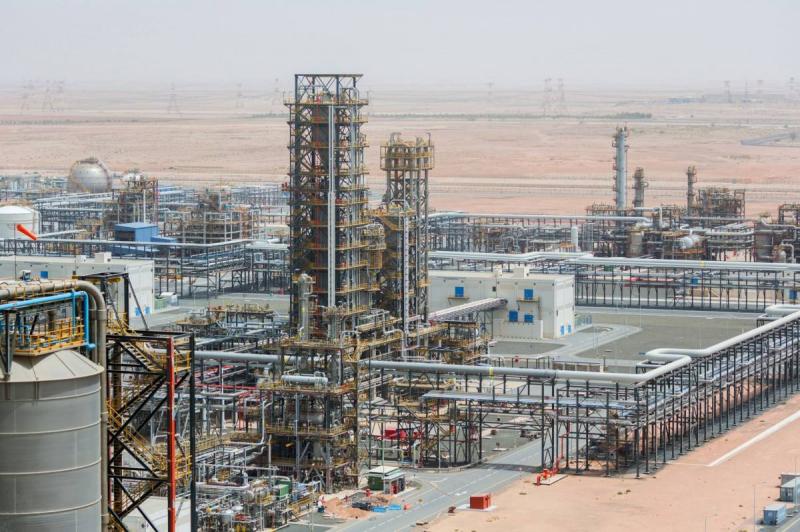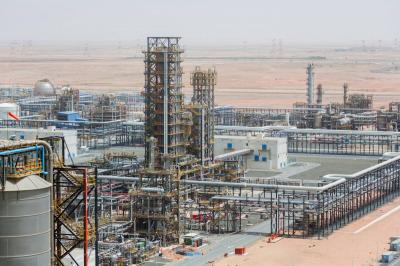Relations between the UAE and OPEC+ have returned to normal, yet their relationship remains fraught with challenges. Before the recent OPEC+ meeting and amidst earlier tensions within the alliance, BP released its annual report entitled "Statistical Review of World Energy." In reference to OPEC+'s intervention to stabilize oil prices last year, Spencer Dale, the company's chief economist, noted that "the alliance's ability to do this sustainably depends on the type of shocks affecting oil markets," highlighting that OPEC's capability to adjust supply over time allows it to offset short-term temporary shocks.
The impact of OPEC+ is significant since it can withhold oil to address oversupply and support prices, or "shift supply over time," as Dale put it. The alliance successfully implemented this strategy in 2017 to reduce bloated oil inventories and again last year to counter the COVID-19 pandemic. Therefore, even if the UAE and OPEC+ resume their cooperation now, they are likely to drift apart again over time. Once the COVID shock passes, a structural problem will reemerge: the world has an abundance of oil with a lack of capacity to absorb the resulting emissions.
A Similar Fate to the Tin Agreement
According to BP's figures, the world consumed about 173 billion barrels of oil over the past five years, with proven reserves barely increasing to 1.73 trillion barrels by the end of 2020. Even if demand were to rise steadily from 96.5 million barrels per day this year to 150 million barrels per day by 2040, the reserves would cover that demand almost twice over. However, the most optimistic forecasts do not predict such demand increase, partly due to its impact on emissions. The International Energy Agency (IEA) anticipates demand will reach 101 million barrels per day by 2040 unless the world achieves zero emissions, at which point demand would halve. Therefore, there is plenty of oil available at a reasonable price; Rystad Energy estimates that 1.3 trillion barrels could be produced daily at an average real price of $50 per barrel for Brent crude, which was trading around $74 last Friday.
For any oil producer with significant resources underground, along with the capacity to increase production and withstand low prices, it would be reckless to restrain production indefinitely. A recent report likening OPEC+ to the old International Tin Council— which collapsed in 1985 due to oversupply and replacement—calculates the impact on member states if production is unleashed resulting in oil prices falling to $40. In reality, the UAE has been the most resilient despite losing 14% of its share. The UAE also requires an oil price of $65 per barrel to balance its budget in 2023, which is the lowest breakeven level compared to other OPEC countries and is expected to decrease further.
Today, OPEC+ is more divided than ever in terms of capabilities and needs, making it hard to envision a club that includes both the UAE and Venezuela (with the UAE's per capita GDP being 127 times that of Venezuela) while managing oil affairs deftly and cohesively at this stage.
Disparities Among Alliance Countries
Among the 23 members of OPEC+, the per capita GDP of citizens in 15 countries remains below the emerging markets average of about $11,000 annually. Moreover, 11 member countries have seen declines by this measure over the past decade (before the COVID pandemic), while 14 countries have not reached peak oil production for over a decade. Six member countries, representing about one-sixth of spare production capacity, embody this challenging trio.
At the same time, only four member countries have not displayed any of these vulnerabilities: Bahrain, Russia, Saudi Arabia, and the UAE, which together hold more than half of OPEC+'s production and spare capacity. While Bahrain's influence here is limited, Russia is not part of the old OPEC, and with the ruble's floating currency alleviating the impact of weak oil prices, Moscow is likely to abandon production targets when it suits them, as it was willing to do before the COVID shock. This leaves only Saudi Arabia and the UAE, both preparing for a world that witnesses peak oil demand, with the latter showing more flexibility and determination.
In this regard, the International Energy Agency sees in its latest "net-zero emissions roadmap" that the average income from oil and gas sales in producer economies will plunge to levels not seen since the 1990s this decade, and by about half in the decade starting 2030. These forecasts may feel like living in a "dreamland," as termed by Saudi Arabia, and the most salient point is that most OPEC+ countries can hardly manage their current reality, making this "dreamland" feel like hell for them.
This is why expectations about national oil companies jumping in to fill the gap due to constraining major Western firms' investments need to be tempered; several state-owned oil companies struggle merely to maintain production within their borders, let alone expand globally. As oil demand fluctuates, some low-cost oil-producing nations are likely to curtail production amid economic turmoil. Notably, much of OPEC+'s "discipline" in its first two years was essentially just exacerbating Venezuela's suffering.
At the same time, wealthier producers will ramp up output, likely by easing restrictions on foreign investment, which the UAE is also advancing. In truth, OPEC and later OPEC+ were formed for a world with rising oil demand where reserves were akin to money accumulating in the bank. However, as the world changes, the capable members will reap profits and emerge victorious.




